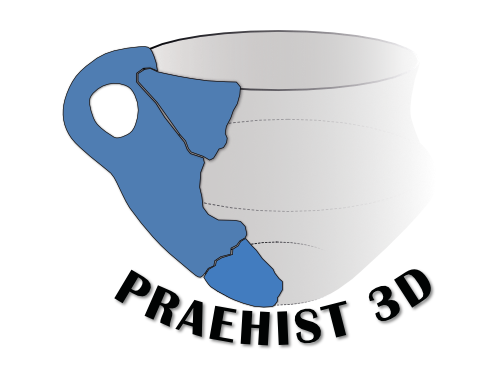Iron Age in the near East
Iron is still one of the most important materials and pillars of our civilization. His discovery and the first regular use as a raw material for tools, weapons, armor and building materials has led in the past to such comprehensive social changes that a complete epoch has been named after him.
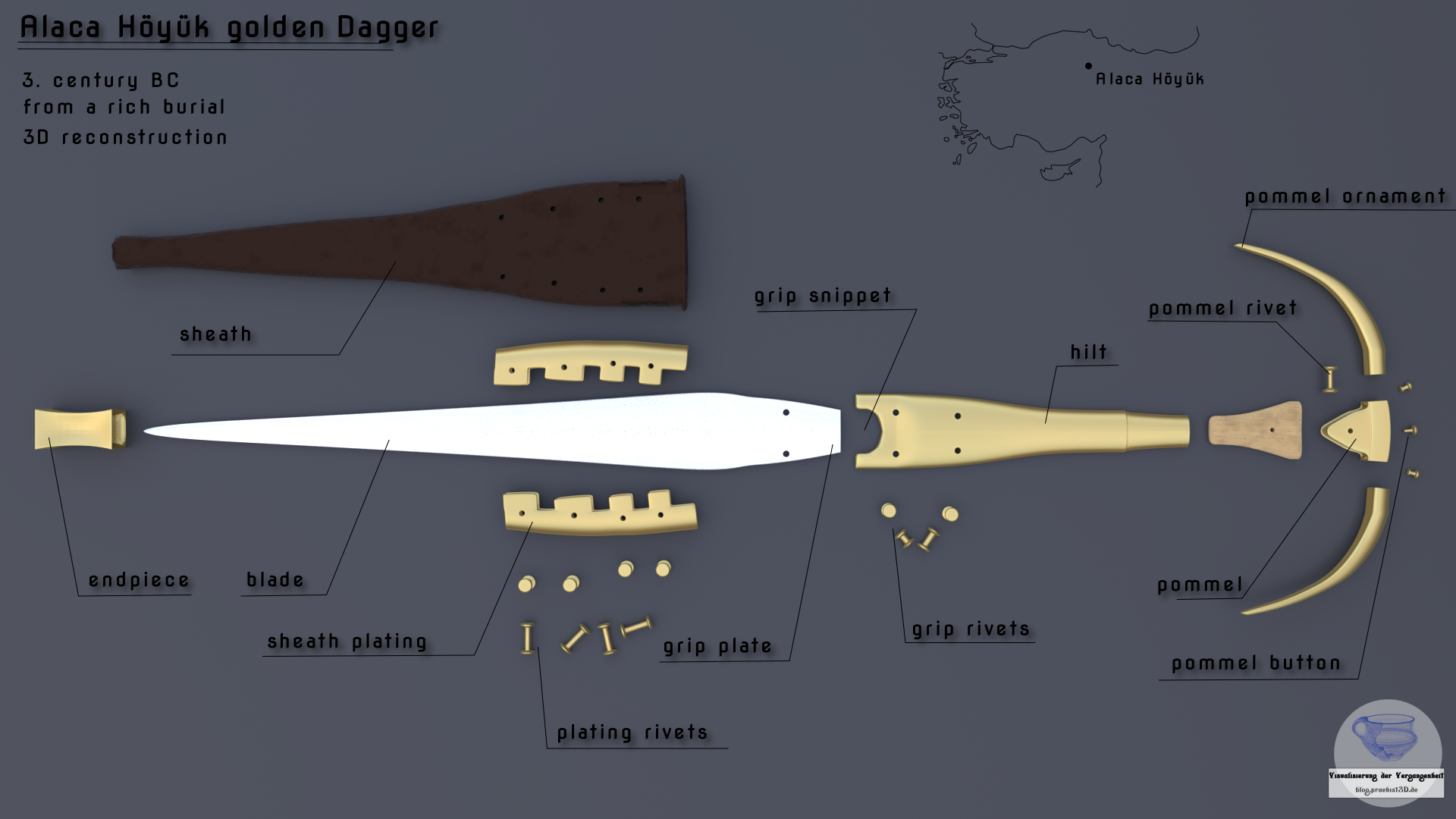
This Iron Age starts in many areas at very different times and does not mark the first use of this material but the beginning of the regular use of iron. In the Middle East, the Iron Age begins in the last quarter of the 2nd century BC and leads to an extreme reorganization of the powers. Above all, the dominance of the Hittites was made possible by its superior iron weapons and the economic monopoly position which brought them the trade of this raw material. At least the written history of the sources points to this. In the archaeological findings, there is little direct evidence of iron production, workstations or finished objects. This imbalance between the sources can be explained in many ways. On the one hand, the processing stations have probably not been discovered yet. On the other hand, unlike gold, copper and bronze, iron is sensitive to decay processes in the soil. Also, the high value of the new material most likely led to a high re-utilization rate of damaged or otherwise unusable objects.
Earliest iron objects in the east
First iron objects occur already from 6000 BC. on. One of the first comes from Samarra (Iraq) and is described as a “tool”. Also in Iran, iron objects are known well before the Iron Age. They are three iron balls from Tepe Sialk. All the very early iron objects are poorly preserved and not very well documented.
Among the early confirmed iron finds of the Orient, one is particularly striking. It is a gold-plated iron dome from a Bronze Age grave in Alaca Höyük.
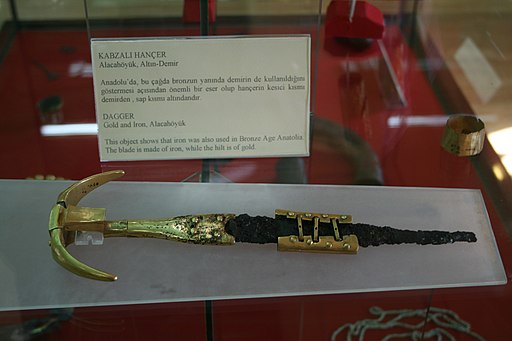
The golden handle and sheath covering it is, in itself, something special. However, gold objects in the Bronze Age are rare but not unknown. This is due above all to the availability of solid gold, which is relatively pure and easy to process despite high melting temperatures. It can also be liquefied or even “cold-forged” using salts, even at lower temperatures.
The gold components are not uncommon since it can be relatively easily processed as a solid material and can also be forged “cold”. Nevertheless, the processing and quantity of precious metal used remains impressive. A real sensation is the blade of the dagger. It consists of iron, which is rare in the Bronze Age. The dagger itself is dated to about 2800–2400 BC and has thus been created more than 1000 years earlier than the actual iron processing started. This is also a comparatively large iron object, which remained a unique feature in its design.
Origins of Iron
In addition to very rare solid iron deposits, iron ores as well as meteorites, sources of pig iron are considered. The smelting of iron ores should not have played any role at this time. This is due, on the one hand, to the difficult production as well as to the complex purification and smelting of the raw material. These work steps require a high degree of experience and a multitude of individual work steps. The knowledge about the processing and extraction of iron for weapons and tools must have been at least temporarily available in Alaca Höyük. This is proved by further iron finds from this site. In addition to the dagger presented here, five other objects come from various princely burials of this time horizon.
Meteors, on the other hand, can be processed relatively easily, similar to solid metals. However, the quality of a cleanly smoothed iron or even forged steel rarely reaches it. As a raw material, this skyiron cannot be excluded, as large iron meteorites are known which could have had enough mass to produce various objects. From Namibia and Greenland, for example, are several tons of heavy iron chunks known that have survived to this day. Also, later indications are found in Hittite sources of literature which point to black iron, which has indeed had a meager quality but is claimed to been come from the heavens.
For this dagger, there is as yet no perfect statement about the origin of the metal. The low nickel values in the material indicate that a production from meteors is rather unlikely.
Reconstruction
The reconstruction shown here represents an idealized form of the dagger. Thus, smaller irregularities were dispensed with, and work was made to be strictly symmetrical. I know this is extremely lazy, but my time was unfortunately limited.
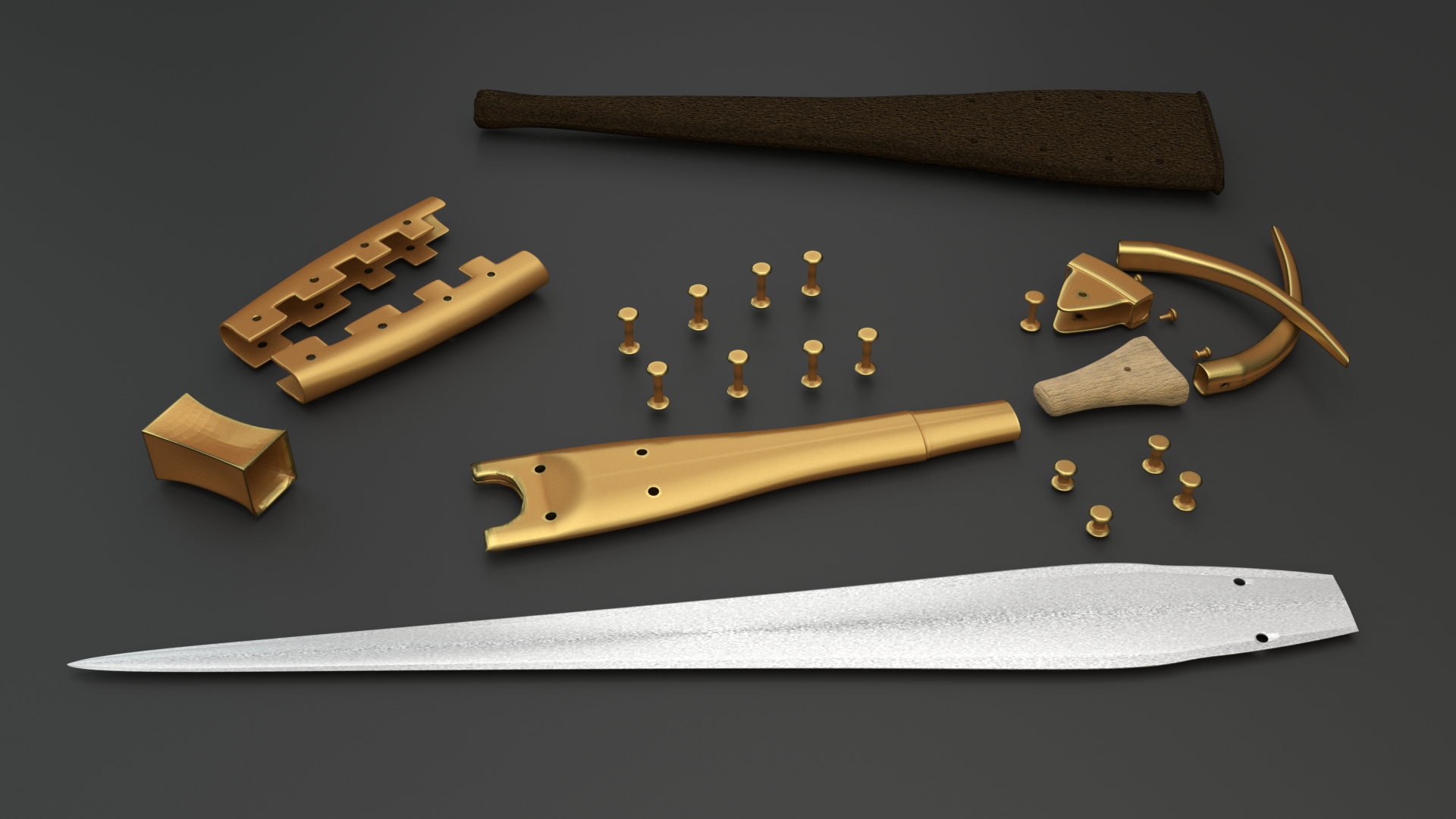
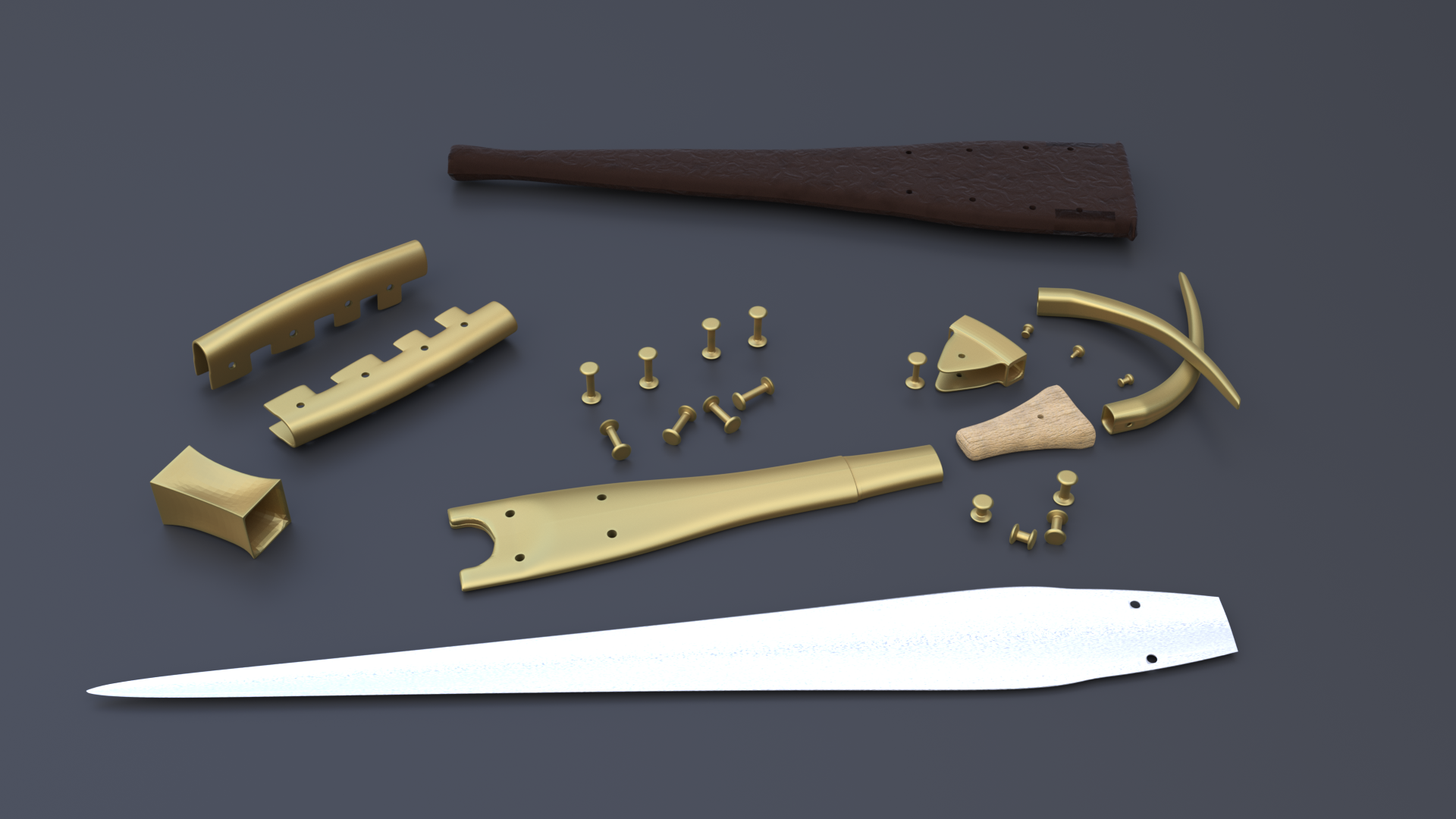
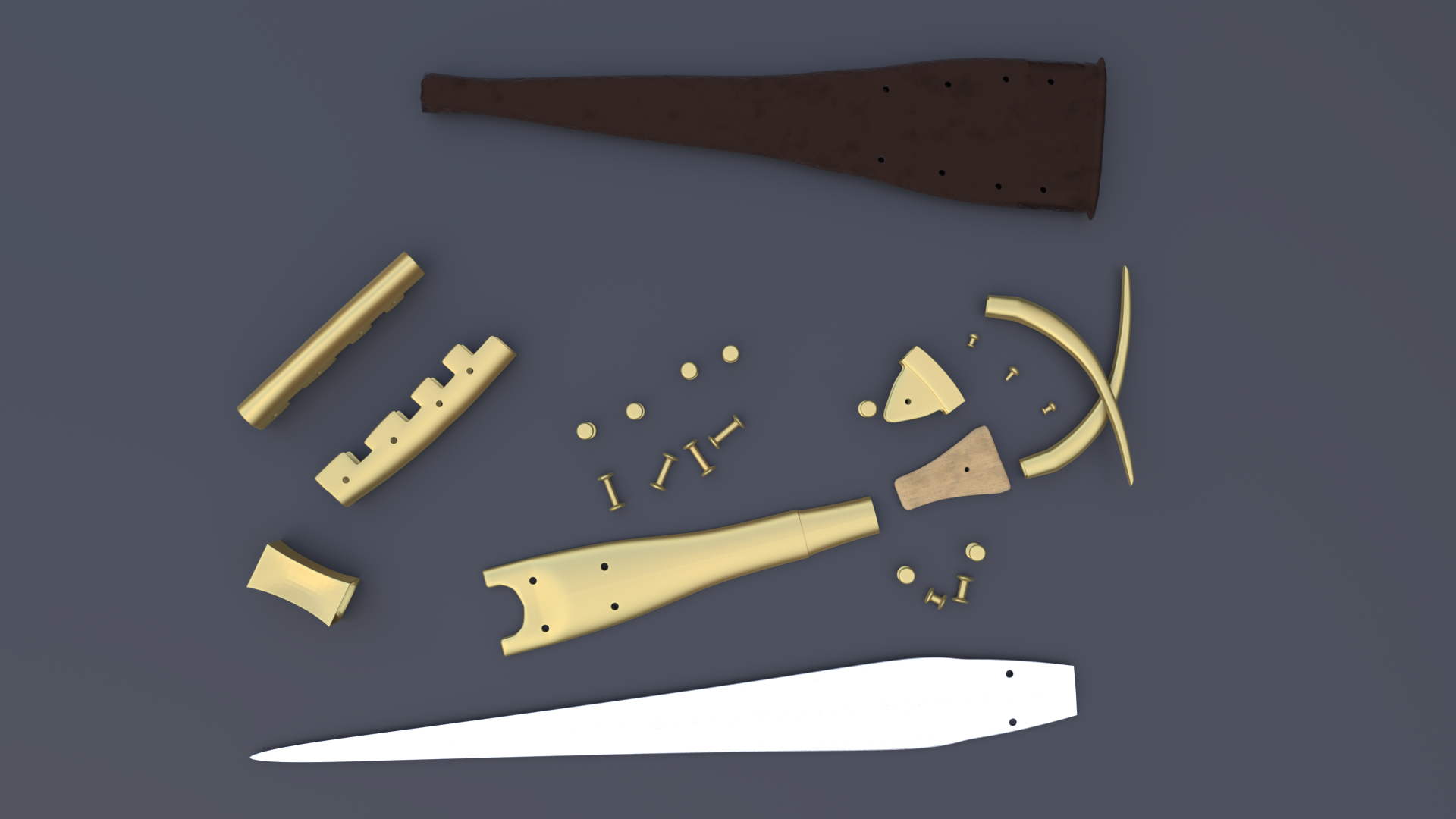
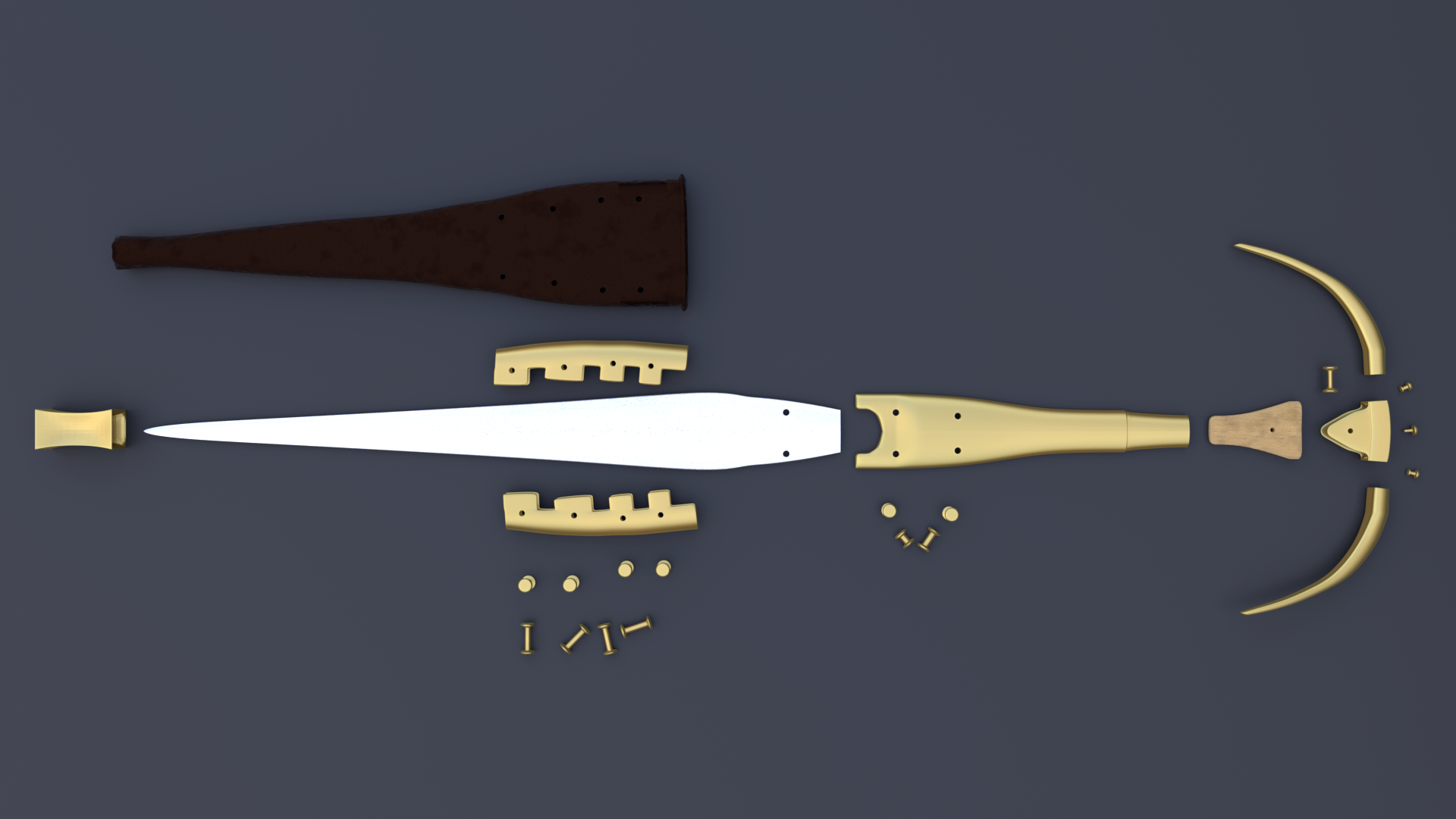
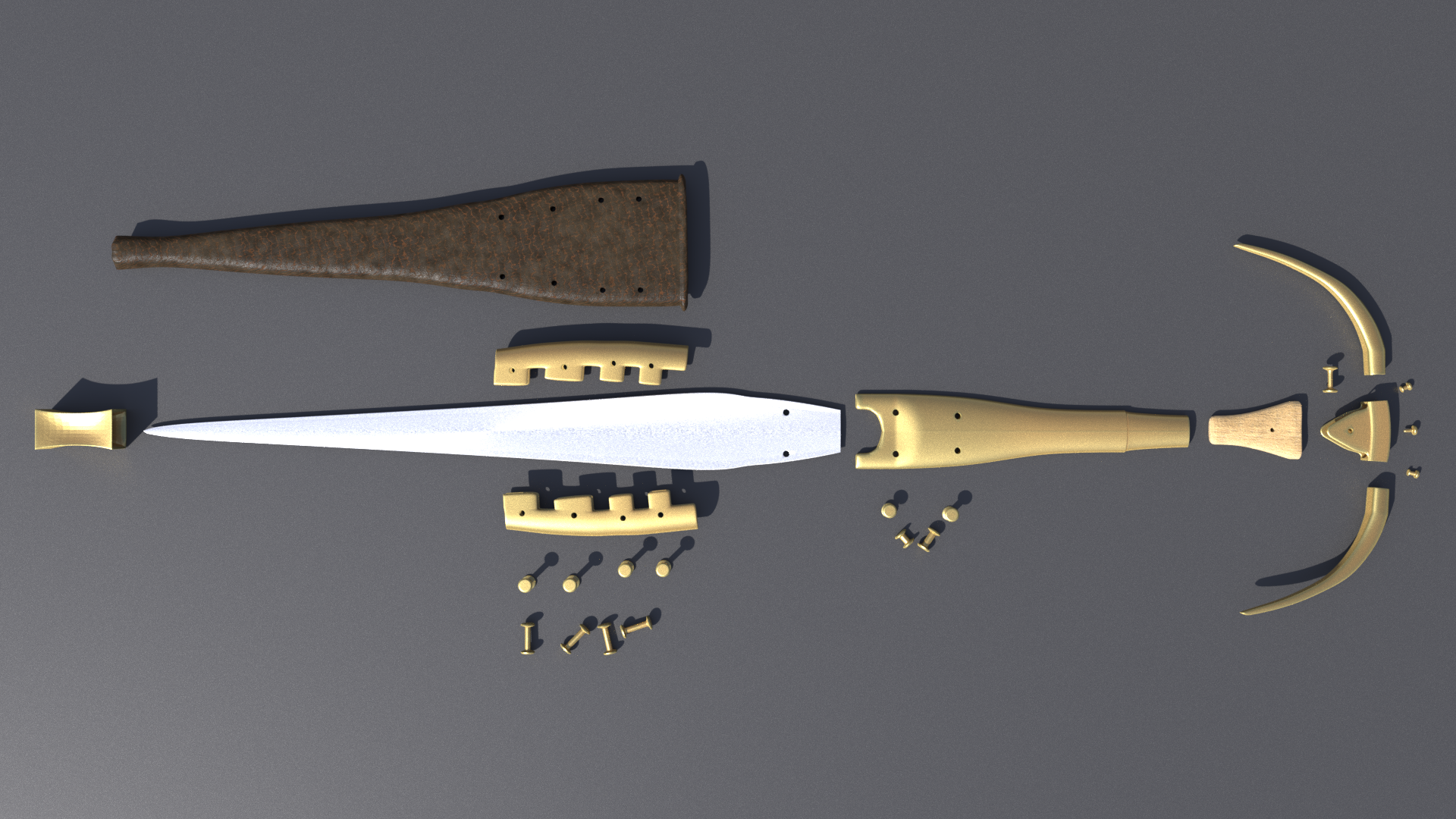
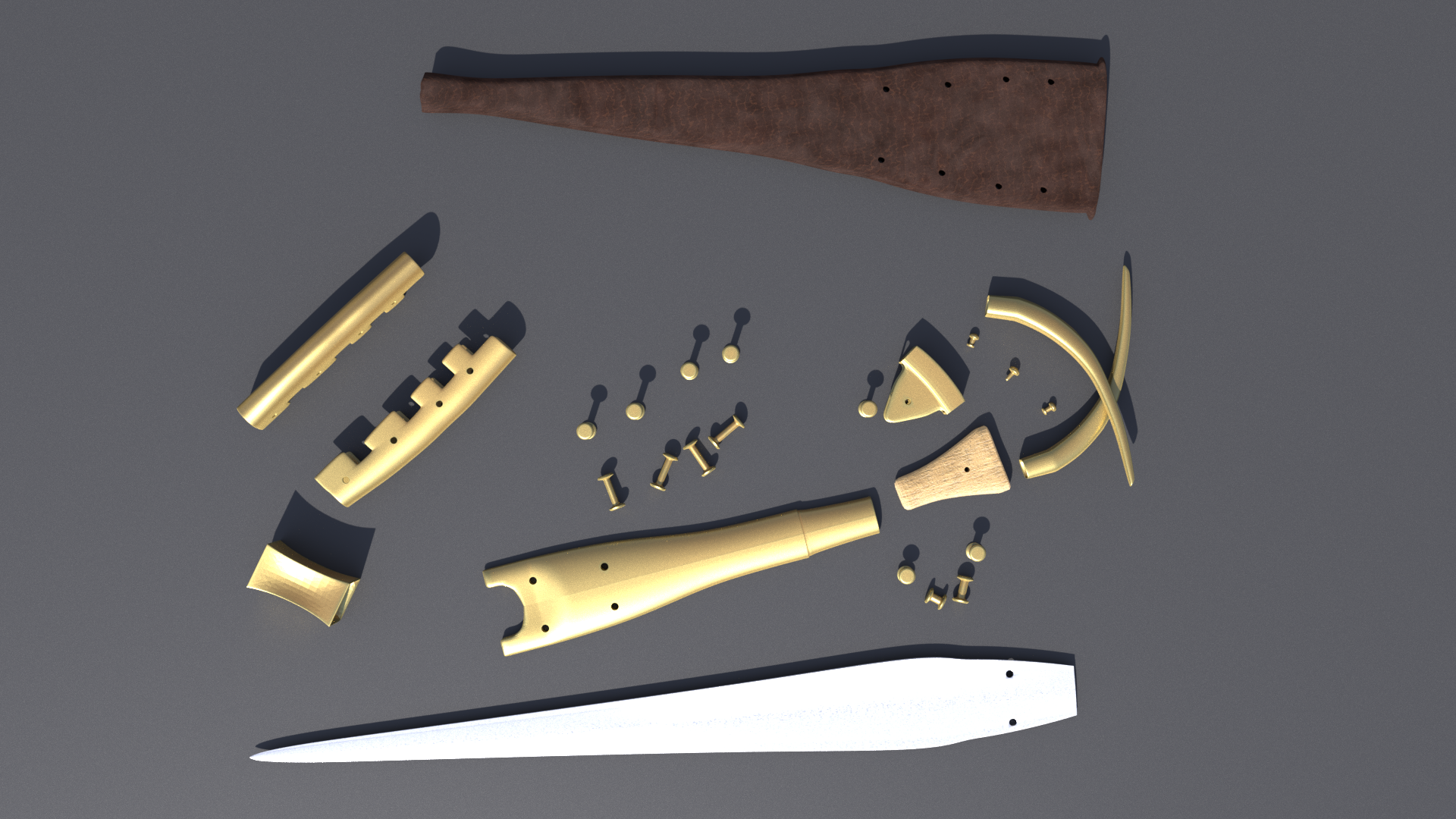
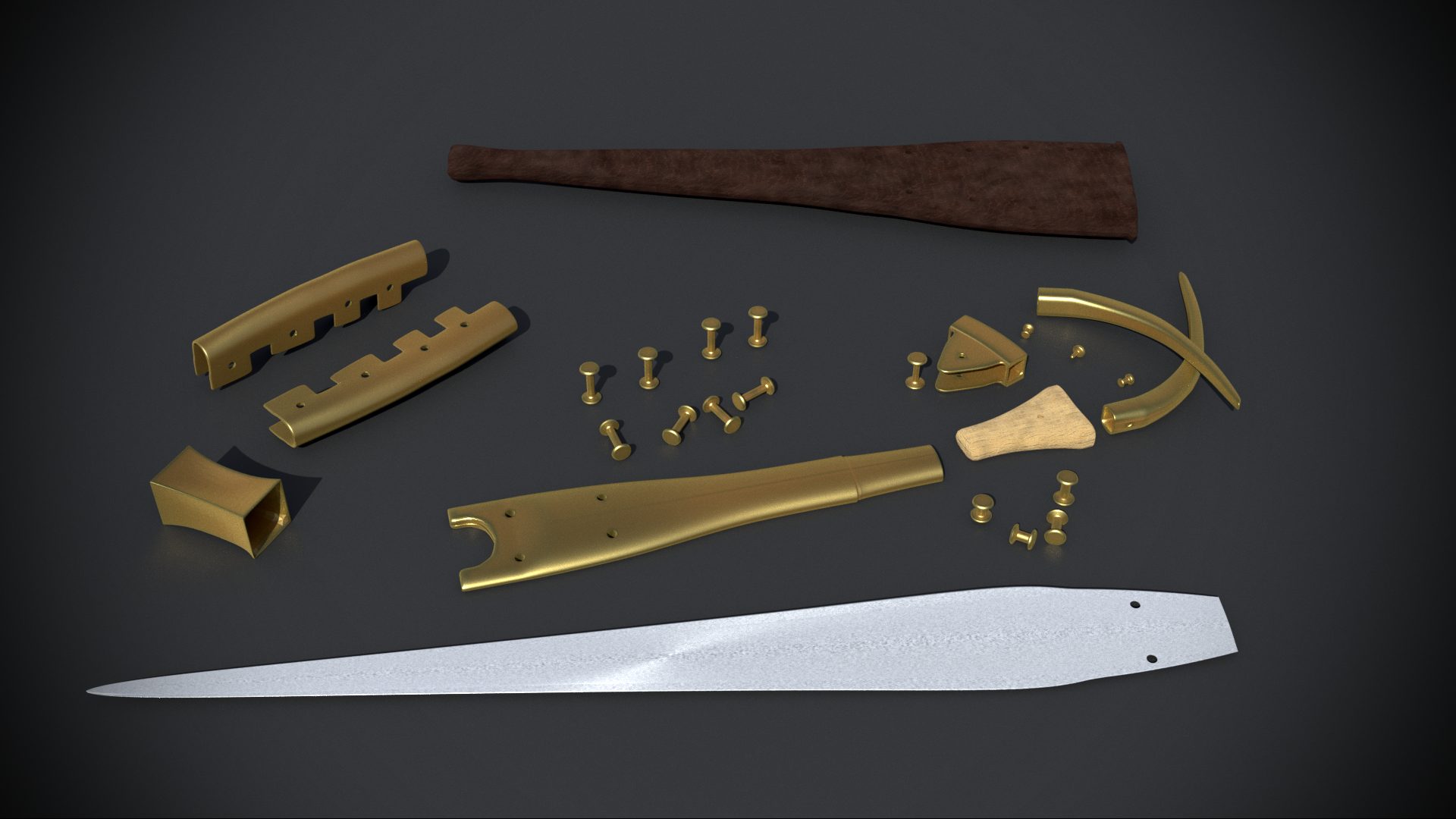
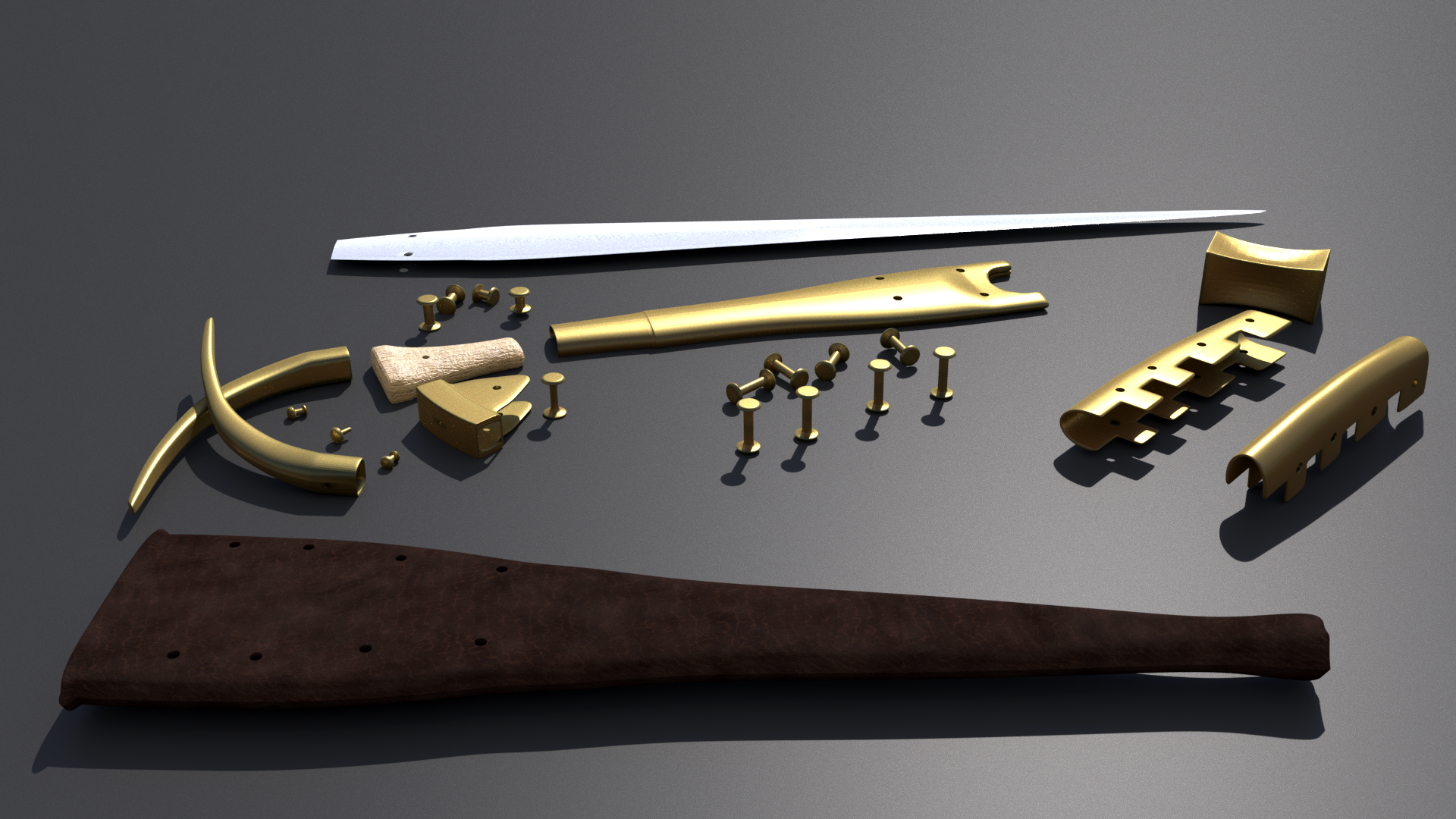
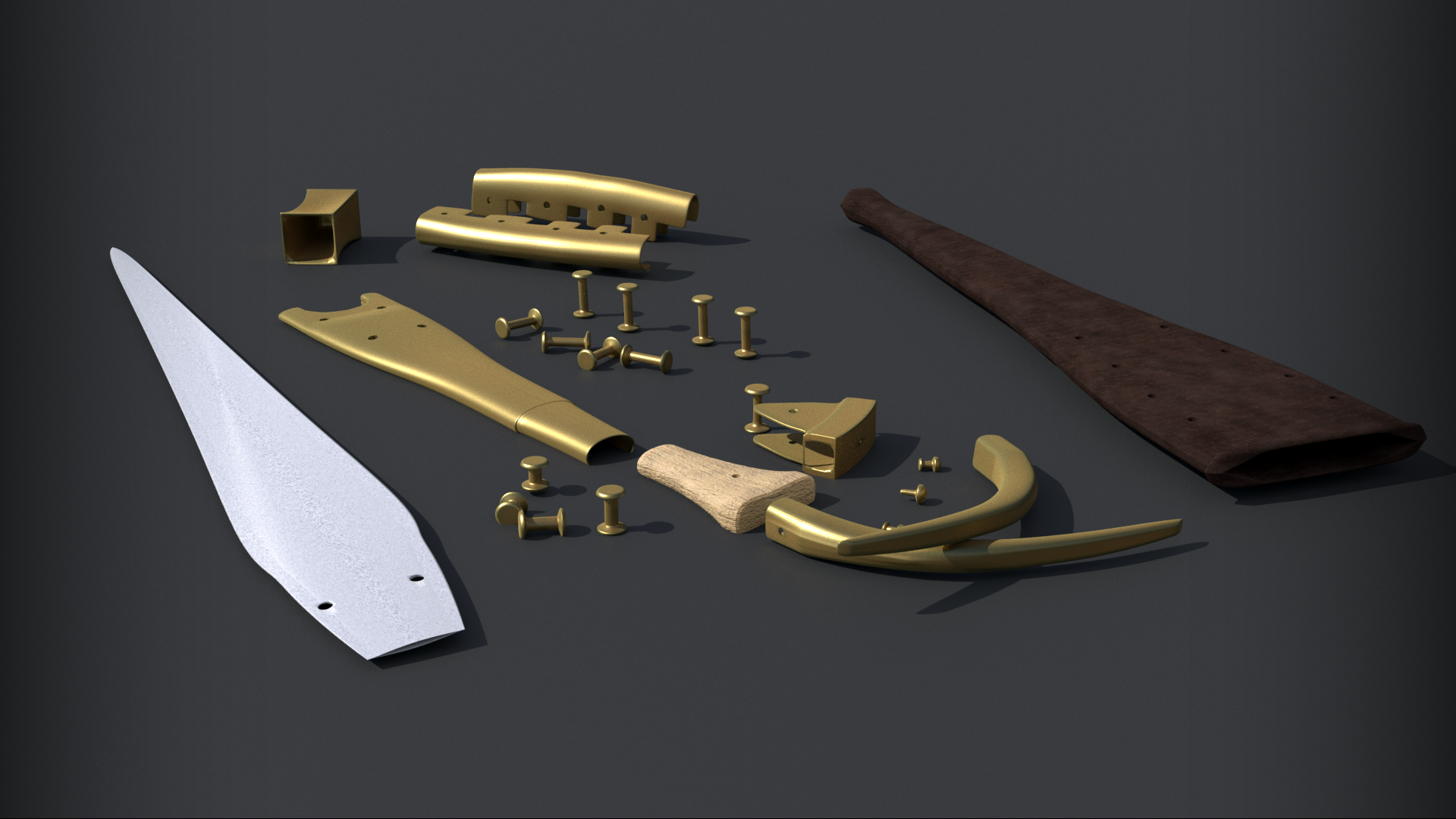
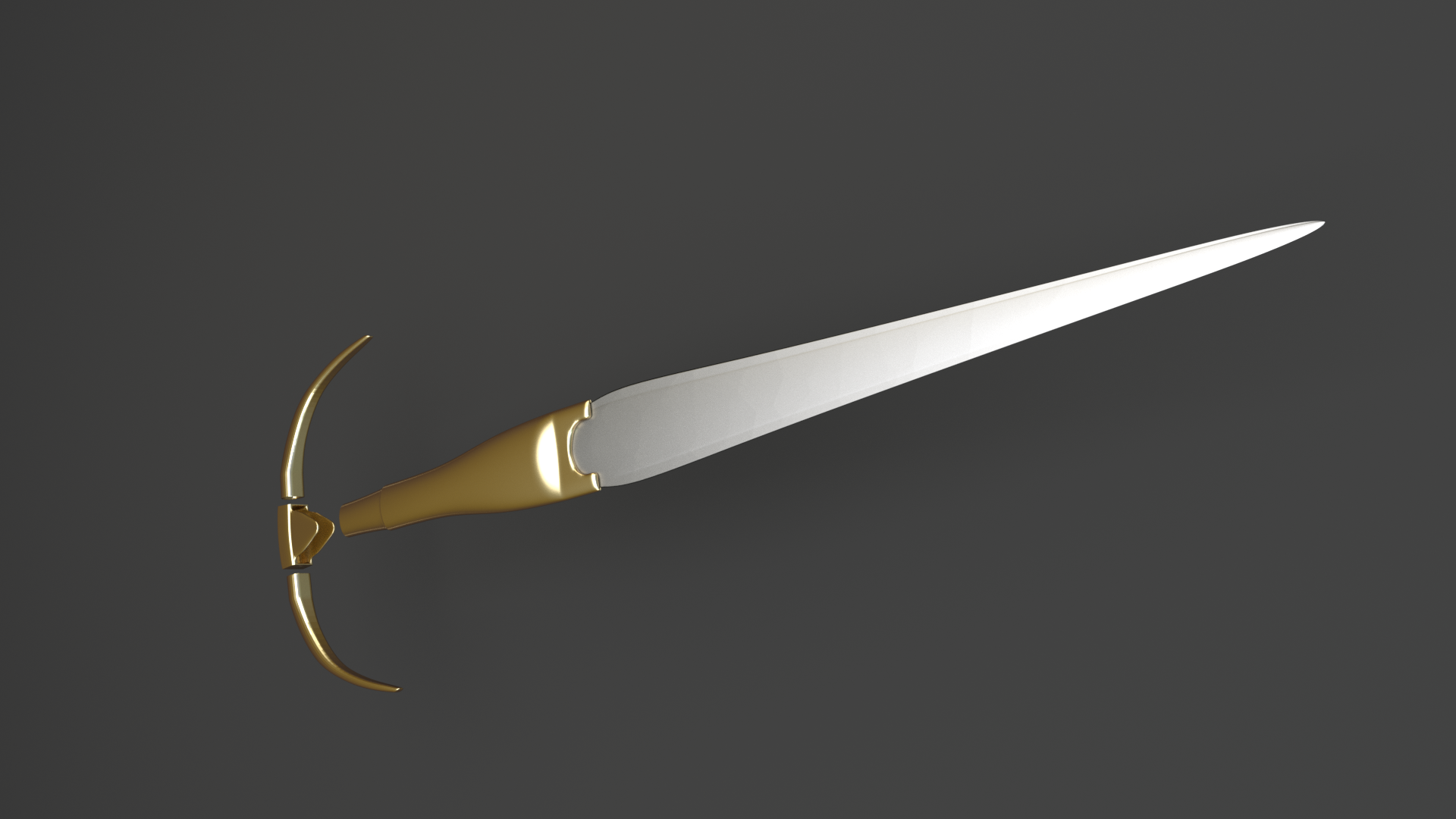
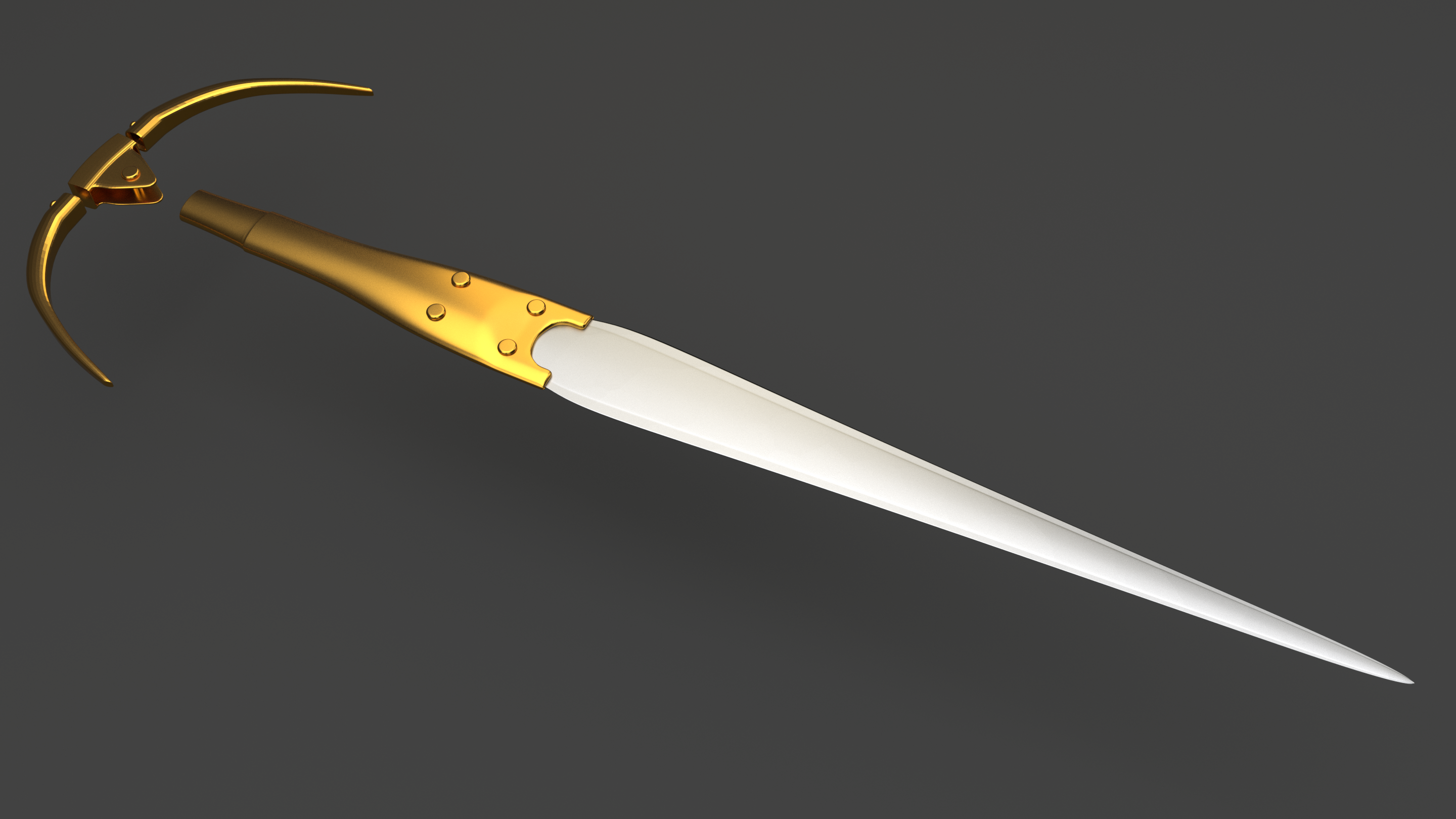
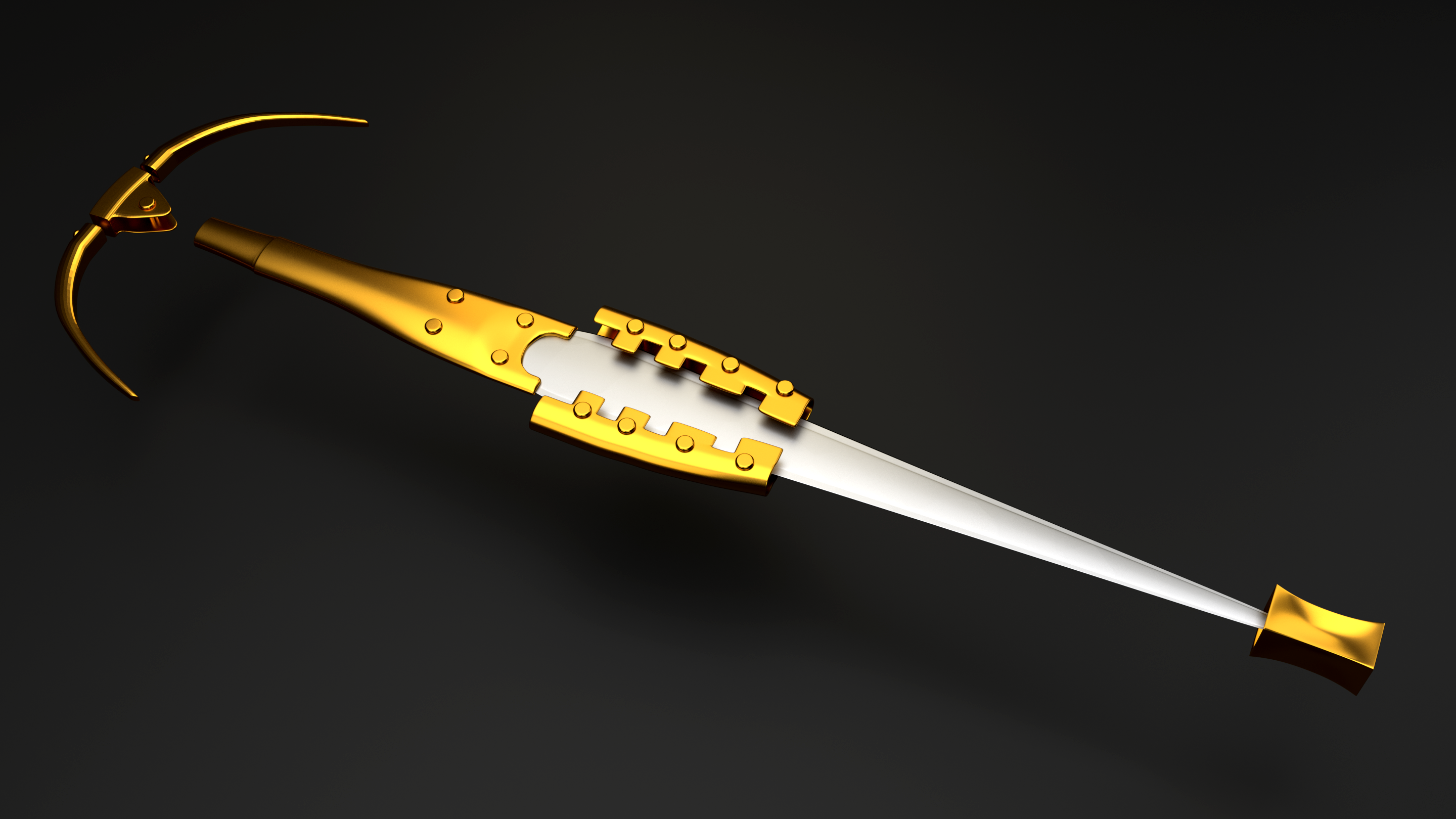
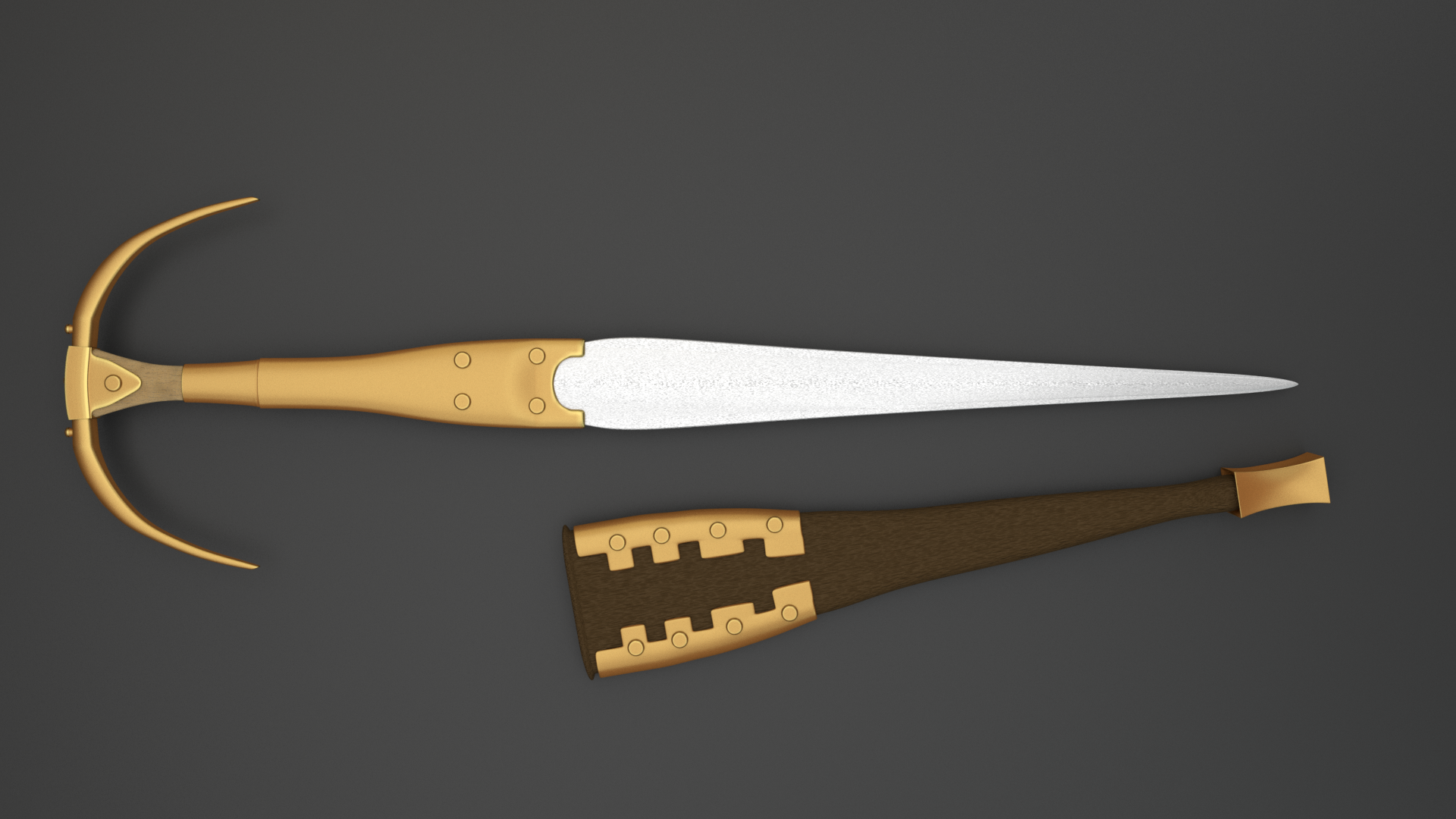
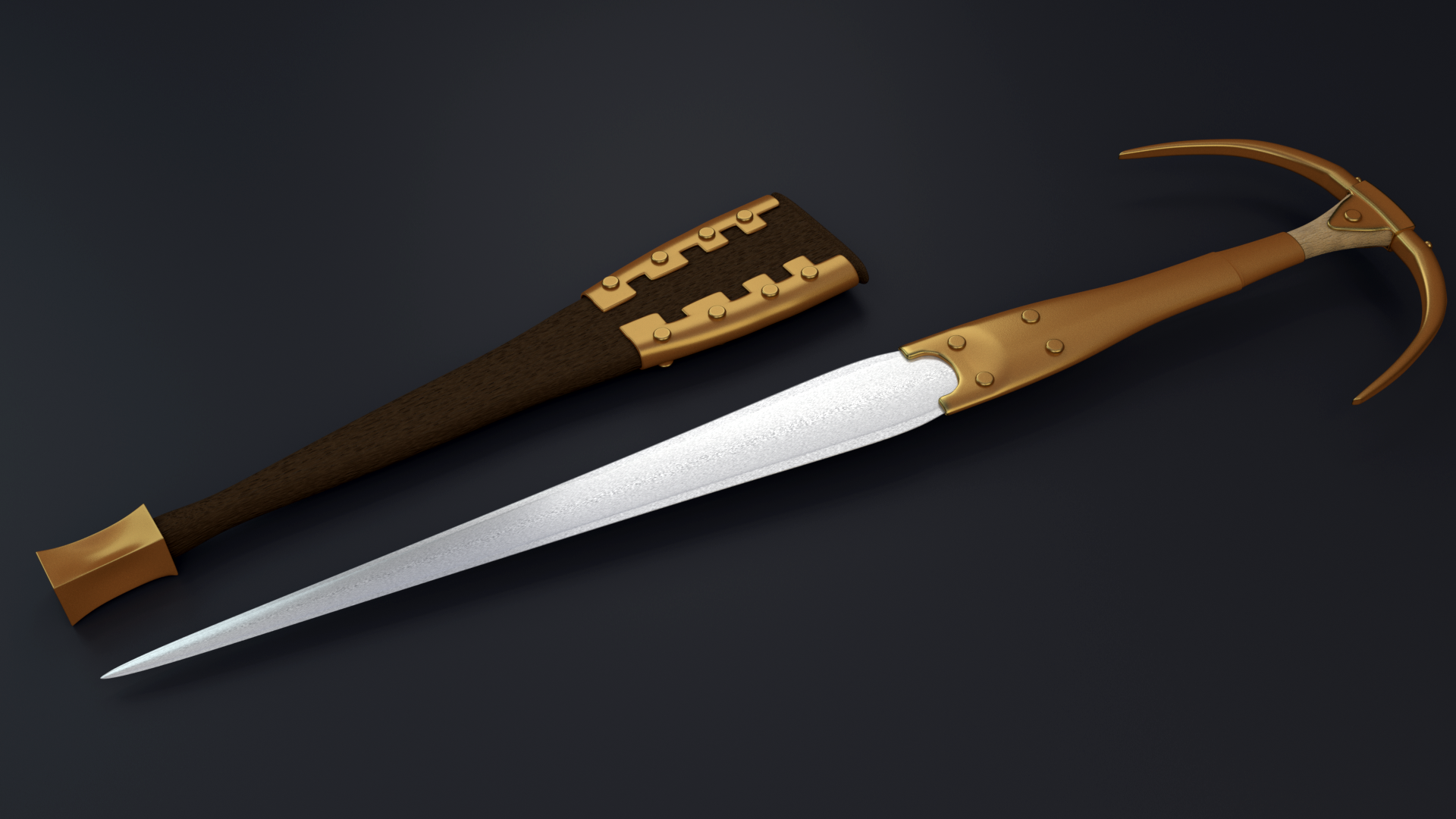
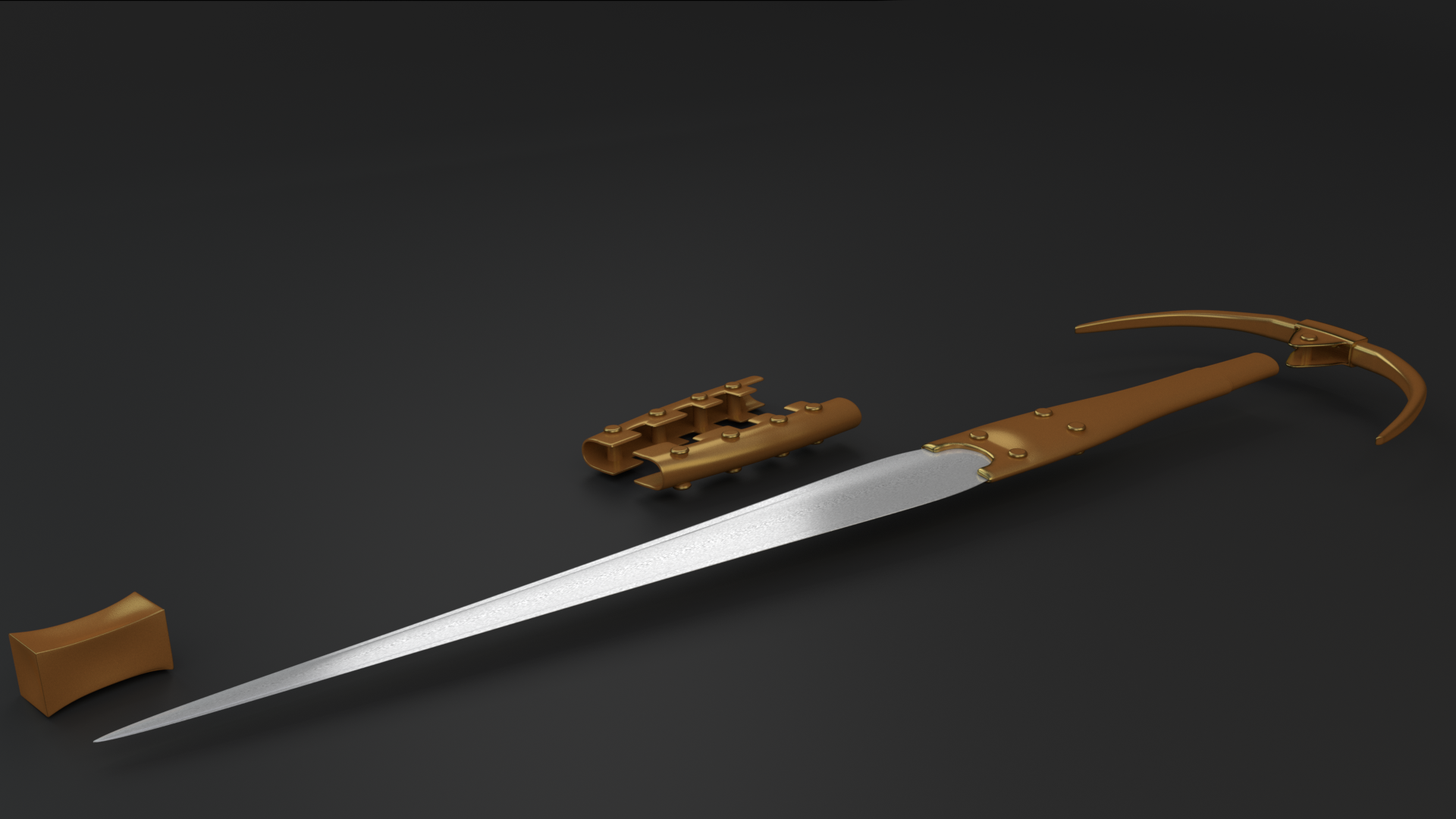
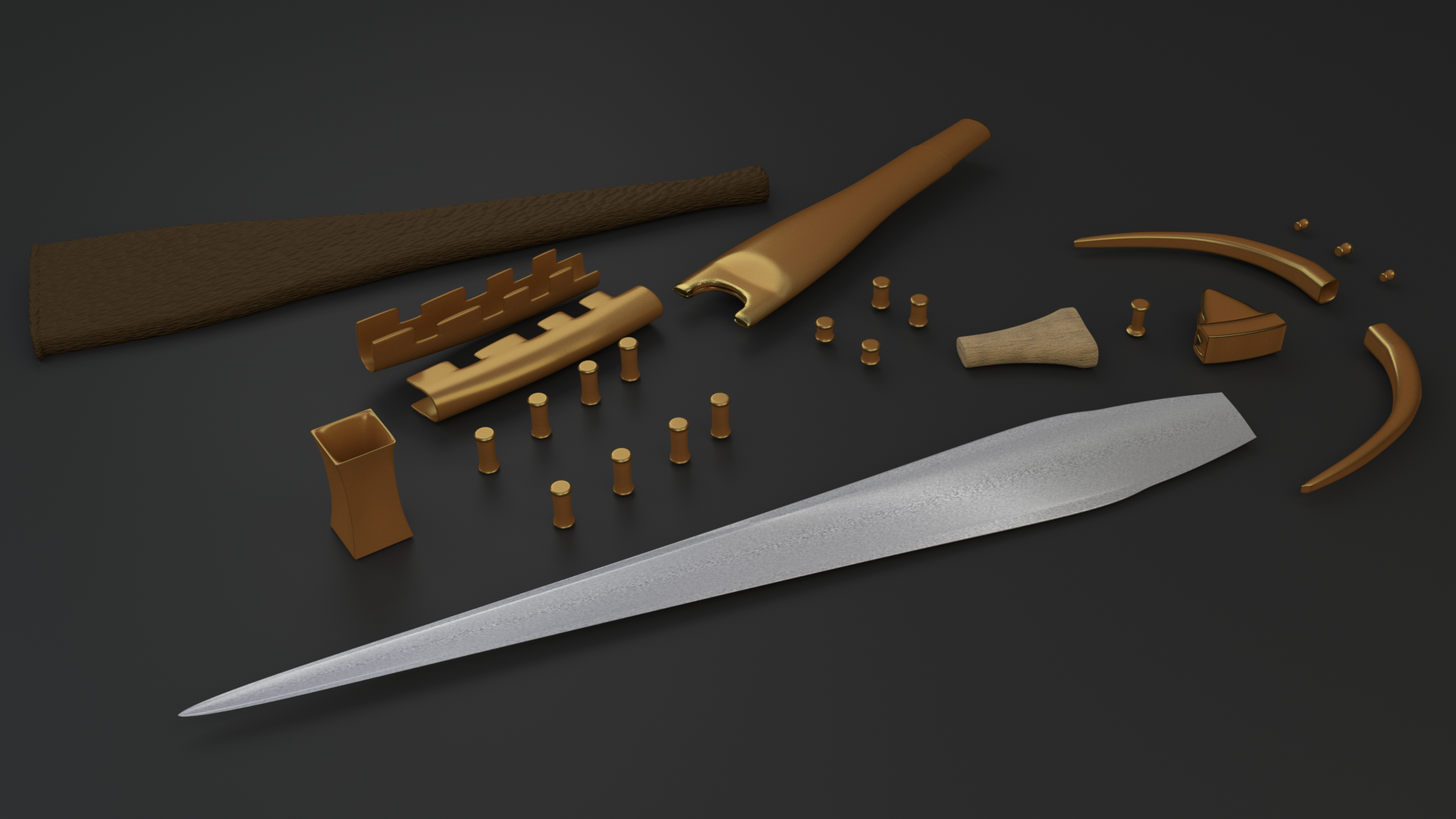
As a basis, I used several freely available pictures which show the dagger, unfortunately only from one or two very similar perspectives. Therefore, a lot had to be added freely.
Most striking is the wooden link between the handle and knob. I have personally decided to use this as an intermediate piece because the bore of the knob is pointing to a holding rider, but this is not found on the handle again. Perhaps this is only due to missing image material, or another piece of the handle is missing.
Only two parallel fittings are obtained from the dagger sheath. These have been simplified in the reconstruction and applied to a leather / fabric cover. The relatively wide shape of this sheath is a compromise, since the fittings are connected with rivets and should not block the blade of the dagger. However, I have too little information to confirm this form. The square end of the dagger sheath with pressed-in surfaces could well have been part of the handle and did not necessarily have to be attached to the end of the dagger sheath.
The form of the blade I have chosen according to the simplest possible form. It has neither a gutter nor a central ridge, nor is it decorated in any form.
All in all, I would like to say clearly that it is a hypothetical ideal reconstruction which has no claim to completeness nor should be regarded as particularly acute.
Used Software
Literature
Ünsal Yalcin, “Zum Eisen der Hethiter” in Das Schiff von Uluburun (493-502), 2005.
Are you interested in 3D scans, prints, reconstructions, workshops or questions?
